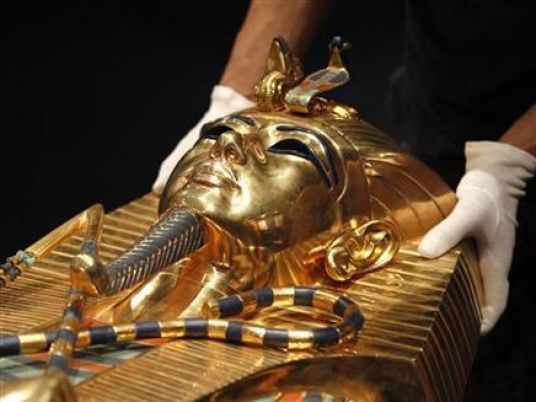
The damage caused by a botched repair of the mask of Tutankhamun that left dried glue on the priceless relic may be undone with careful treatment, a German conservator said Saturday.
The golden funerary mask, one of the main tourist attractions at the Egyptian Museum in Cairo, bears the sticky aftermath of what appears to have been overzealous use of glue to fix its beard in place.
The beard had fallen off accidently when the mask was removed from its case last year to repair the lighting in the case where it is displayed, officials said.
"There is no actual endangering of the mask… the measures that have been taken are reversible," Christian Eckmann, who specialises in conserving archaeological glass and metal objects, told reporters at a press conference at the museum.
Eckmann said that when the lighting in the display case was being repaired in August 2014, "the mask was touched and the beard fell… due to the glue which was used during the first restoration of the mask in 1941".
He said he was unaware what kind of epoxy was used in the repair, but epoxy "is not the best solution" to fix artefacts even if it is often used.
However, the glue was applied improperly and its remains were visible on the braided beard piece, he said.
"It can be reversed. It has to be done very carefully, but it is reversible," said Eckmann, who has now been appointed by the antiquities ministry to oversee the mask's repair.
Describing the botched repair work, Eckmann said "there was an attempt to glue (the beard) with another resin".
"The beard is very heavy… more than two kilos (4.4 pounds)," he told AFP, saying it was still difficult to clearly assess the damage done to the priceless relic.
Antiquities Minister Mahmud al-Damaty on Friday denied that the 3,000-year-old relic was treated carelessly.
"The job was done correctly," he told AFP.
A museum official previously said the damage occurred when the mask hit the display case and almost fell when it was removed.
"So (the curator) grabbed it in his arms to break the fall, and the beard separated," he said.
"This mistake can happen. But what caused it to get worse? The curator was scared and he fixed it hastily."
The death mask of the enigmatic boy king is one of the crown jewels of the Egyptian Museum, which also houses the mummy of Pharaoh Ramses II.
The museum used to attract millions of tourists before a 2011 revolt — centred in nearby Tahrir Square — brought down president Hosni Mubarak and unleashed four years of tumult.
